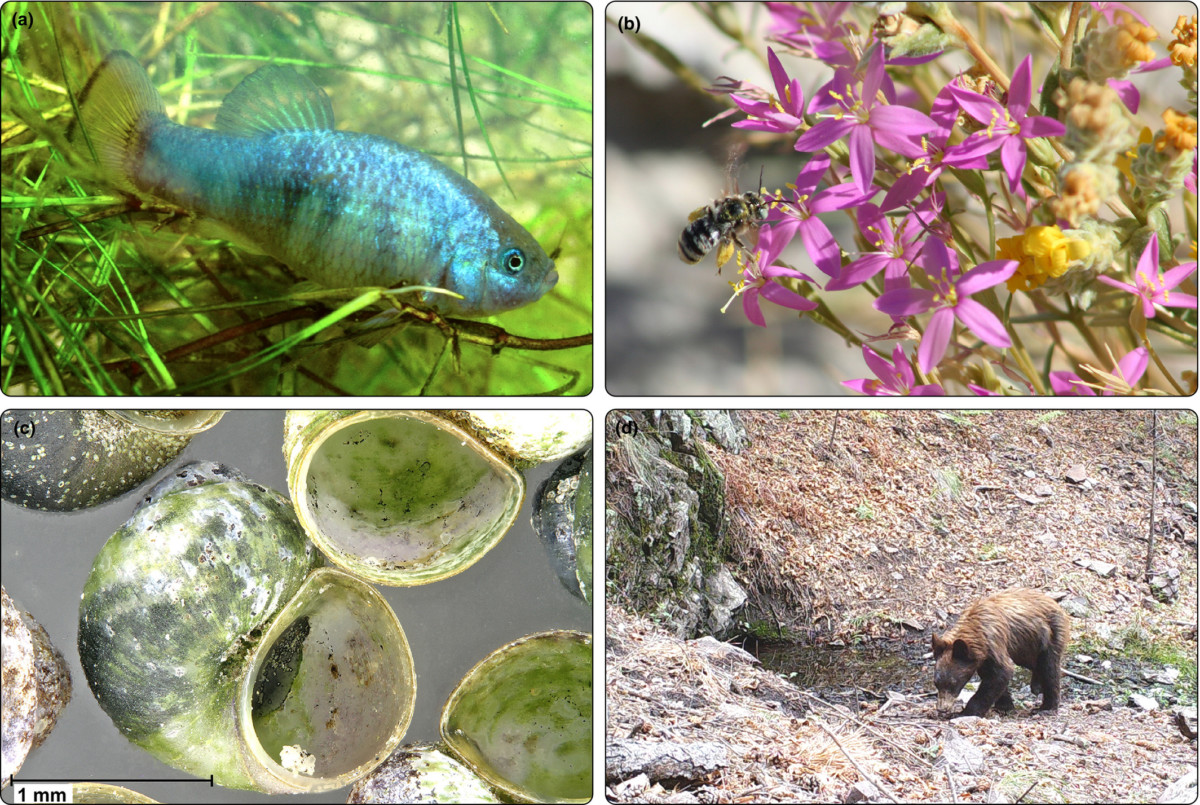Last week, a new paper in Frontiers in Ecology and the Environment by Jennifer Cartwright and colleagues (including Sky Island Alliance’s very own Sami Hammer and Louise Misztal) was published that describes the inspiring potential for springs to provide refuge for a large array of species in the arid Southwest region as climate changes. Springs already serve as vital habitat in our dry landscape—providing water, food, and shelter for species that locally only occur in these unique ecosystems (endemic species) and for wide-ranging species that travel vast distances between water sources, like jaguars and migratory birds.

Springs are hotspots of biodiversity, supporting (a) groundwater‐dependent endemic fish (e.g. Salt Creek pupfish, Cyprinodon salinus ); (b) plants (e.g. spring‐loving centaury, Zeltnera namophila ); and (c) invertebrates (e.g. New Mexico hotspring snail, Pyrgulopsis thermalis ). Springs are also critically important water sources for terrestrial animals in water‐limited landscapes, including (d) the American black bear (Ursus americanus ). D Sada, Desert Research Institute C Souza, USFWS G Alpert, Museum of Northern Arizona J. Moeny, New Mexico Environment (Cartwright et al. 2020).
Given that springs are fed by aquifers and groundwater, they are slower to respond to periods of drought, thereby providing more consistent water for species over time. If groundwater continues to recharge and the spring habitat aboveground is protected, the likelihood that springs can offer stable refuge for species while climate changes is high. This means that fish and other water-dependent species can survive in the spring itself and riparian plants would be buffered from drought stress. However, springs face a multitude of threats and their capacity to serve as long-term refugia depends on groundwater recharge and how the springs are managed and protected aboveground. If the water table drops too much, spring flow is diverted, or the springs are trampled by livestock or human recreation, then the potential for springs to serve as refuges drop significantly. If the quality of the spring declines quickly, spring endemics become trapped in that location and risk extension.
By monitoring the presence of water at springs and the associated spring habitat condition and biodiversity, we will be better able to determine which springs can be optimal refuges in the future and learn which springs are most at risk of declining habitat quality. With the data and knowledge that comes from tracking the health of springs, we will have an early-warning system to detect where species are most at risk and time to develop conservation strategies on the ground to enhance springs.
We are growing our spring monitoring program this summer and look forward to sharing more details about how you can help us with this work soon, so stay tuned! In the meantime, read more about springs basics here and read the full Cartwright et al. 2020 publication here.
Citation
Cartwright, J. M., K. A. Dwire, Z. Freed, S. Hammer, B. McLaughlin, L. W. Misztal, E. R. Schenk, J. R. Spence, A. E. Springer, L. E. Stevens. 2020. Oases of the future? Springs as potential hydrologic refugia in drying climates. Frontiers in Ecology and the Environment, 18 (5): 245-253. https://doi.org/10.1002/fee.2191

